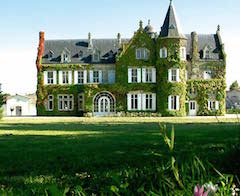
Avec ses 130ha de vignes dont 120ha en AOC Margaux et 10ha en AOC Haut-Médoc, le Château Lascombes est l’un des plus grands domaines du Médoc.
Classé Second Cru en 1855, le château est fort d’une histoire prestigieuse qui débute avec le chevalier de Lascombes, né en 1625, et d’un terroir composé d’une quarantaine des meilleures parcelles de l’appellation Margaux.
Tant à la vigne qu’au chai, tradition et modernité s’allient pour livrer un vin puissant, concentré, fruité et élégant.
En 2001, une nouvelle ère commence sous la direction de Dominique Befve. Les chais et le vignoble sont complètement restructurés afin d’y produire un vin digne de son rang et de son appellation.
Depuis 2011, c’est la MACSF (Mutuelle d’Assurances du Corps de Santé Français) qui est propriétaire du domaine, toujours dirigé par Dominique Befve.
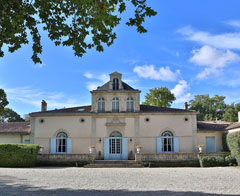
Le château, situé au sud de l'appellation Margaux, doit son nom à son premier propriétaire, Guilhem de Siran, qui acquiert la propriété en 1480. C'est à la fin du XVIIème siècle, au moment du grand développement viticole du Médoc, que le château commence à produire du vin dont la notoriété ne cessera de croitre au cours du XVIIème. C'est à cette époque que la famille Miailhe décide de s'installer à Bordeaux, exerçant alors le métier de courtier en vins au titre d'une concession royale. C'est dans la seconde moitié du XIXème siècle que le château Siran devient propriété de la famille Mialhe.
En 2007, William-Alain et Brigitte Miailhe qui ont largement contribué depuis 1979 à asseoir la notoriété de Château Siran, transmettent la direction du domaine à leur fils Edouard qui incarne la 5ème génération à la tête de ce vignoble.
Depuis son arrivée, il a mis en œuvre un programme ambitieux de rénovation du domaine tant dans la vigne que dans les chais. Le Château Siran compte aujourd'hui 25 hectares de vignoble en appellation Margaux, avec des sols de sables, de graves (galets) et d'argile qui permettent un encépagement équilibré : 46% de merlot, 41% de Cabernet Sauvignon, 11% de Petit Verdot et enfin 2% de Cabernet Franc. La propriété dispose donc d'un terroir d'exception propice à l'élaboration de certains des plus grands vins du Médoc.
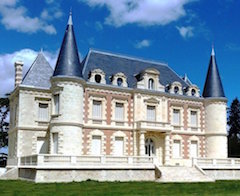
Considéré comme un des principaux Crus Bourgeois Supérieur au 19e siècle, Lamothe-Bergeron est depuis toujours une référence du Haut-Médoc.
Le vignoble du Château s'étend sur 67 hectares. Son vin reflète la qualité de son terroir de graves garonnaises et bénéficie du statut de Cru Bourgeois depuis le 19ème siècle.
En 2009, les maisons de Cognac H. Mounier et Hardy font l’acquisition de la propriété avec de belles et grandes ambitions. En 2015, après 18 mois de travaux, le château est entièrement restauré.
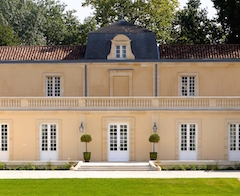
Château Dauzac Grand Cru Classé Margaux en 1855 est un prestigieux domaine de 120 hectares, comprenant un vignoble d’un seul tenant de 45 hectares, un magnifique parc arboré et une zone de biodiversité.
Le chai gravitaire, abrite de nouveaux foudres en bois de chêne, équipés d’une double douelle transparente qui permettent un pilotage précis des fermentations.
Le vin de Château Dauzac, 65% Cabernet-Sauvignon et 35% Merlot, est riche en tanins avec une infinie souplesse, puissant et délicat.
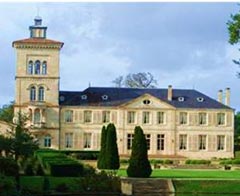
L'histoire de ce domaine remonte au moyen âge, le château est entouré de vignes mais aussi d'un magnifique jardin qui fait aussi parti de la visite.
Il a l'originalité de produire 4 hectares de vin blanc (exception dans le médoc !) issu de sauvignon blanc, de sémillon et de muscadelle.
C'est à partir de 1796, avec Jean Valère Cabarrus, devenu Comte de l'Empire et ministre des Finances de Napoléon Ier en Espagne que commence la grande histoire du vignoble de Lagrange. Celui-ci l'agrandit par de nombreuses acquisitions et le garde jusqu'en 1825. En 1855, le Château Lagrange est classé Troisième Grand Cru du Médoc.
Lorsqu'en 1983, le groupe Suntory, leader japonais du monde des boissons et spiritueux acquiert la propriété, il apporte les capitaux nécessaires à la spectaculaire rénovation du domaine. Priorité est donnée au vignoble puis à la modernisation et à la transformation du cuvier et des chais.
Aujourd'hui, le vignoble de Lagrange s'étend sur 117 hectares. Les efforts engagés depuis les années 1980 se poursuivent : conduite minutieuse du vignoble et vinifications parcellaires donnent naissance à un vin puissant et élégant, de grande garde chaque année. Le Château Lagrange est aussi un des rares crus du Médoc à produire un vin blanc : les Arums de Lagrange.
Bruno Eynard et son équipe soutiennent les valeurs de respect de l'environnement.
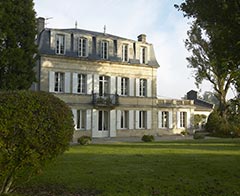
Le château Paloumey est une maison bourgeoise chaleureuse et accueillante. Son nom d'origine gasconne signifie passage de palombe : cet oiseau migrateur qui survole notre région à l'automne.
Après une visite détaillée vous pourrez admirer la vue à 360° depuis la terrasse.
Au début du XIXème siècle, les vins du Château Paloumey avaient acquis une réputation notoire. Le domaine de 35 hectares appartenait alors au marchand de vin Octave Dupuy qui le rénova entièrement. Les vins furent rapidement classés parmi les meilleurs Crus Bourgeois, comme en atteste l'édition du Féret de 1868 et le classement des Crus Bourgeois de 1932.
Hélas vers 1950 le vignoble entier fut arraché victime des années sombres de guerre. Aucune vigne ne fut replantée et donc aucune bouteille de Château Paloumey ne vit le jour pendant près de 40 ans. Lorsque Martine Cazeneuve, en 1989, prend le pari de redorer le blason du Château le challenge est de taille : plus de vigne, plus de chai, aucun bâtiment d'exploitation. Martine consacre plusieurs années de travail passionné et acharné pour remembrer, planter et construire et finalement redonner vie à cette propriété. Cette détermination est récompensée avec le positionnement de Paloumey parmi les plus grands Crus Bourgeois.
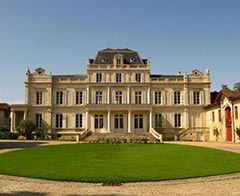
L'une des plus grandes propriété du Médoc, construit au XIXème siècle par son propriétaire, le Comte de Pescatore pour séduire l'impératrice Eugénie. Cette dernière n'est jamais venue… mais grâce à elle vous serez séduit par ce palais néoclassique, et son parc aux essences rares noyés au milieu des vignes.
Giscours est riche de son histoire : une histoire très ancienne remontant au XIVe siècle. Un donjon défensif surplombaitalors une campagne inhospitalière. Mais tout commença véritablement en 1552, date à laquelle Pierre de Lhomme, riche drapier bordelais acheta la maison noble de « Guyscoutz », constitua autour un vaste domaine et planta les toutes premières vignes.
L'aventure viticole était en marche. C'est au XIXe siècle, sous l'impulsion des Promis, des Pescatore et des Cruse notamment, que Giscours se pare de ses plus beaux atours : transformation du château en palais néoclassique, aménagement d'un parc aux essences rares par le paysagiste Eugène Bülher, modernisation des outils de production avec la construction d'immenses bâtiments d'exploitation, dont la célèbre « Ferme Suzanne » …
En 1995, Éric Albada Jelgersma, homme d'affaires hollandais en reprend l'exploitation et entreprend un méticuleux travail de remise en état du vignoble ainsi que la rénovation des bâtiments pour redonner toute la noblesse qui sied à ce Troisième Grand Cru Classé de 1855.
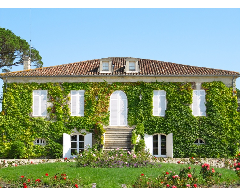
Le Château Camensac, Grand Cru Classé en 1855, est situé sur l’appellation Haut-Médoc dont la notoriété n’est malheureusement pas au niveau de ces voisines malgré d’excellents vins. Le château Camensac, après avoir connu quelques décennies de difficultés, a d'évidence renoué avec la qualité qui lui avait valu les honneurs du classement de 1855.
Ce renouveau est entièrement lié aux immenses efforts consentis par la famille Forner depuis 1964. Ainsi au cours des années qui ont suivi l'installation de la famille Forner au Château Camensac, a été mis en place un vaste plan de rénovation, avec notamment la création d'un outil de production ultraperformant à la hauteur de la qualité de l'exploitation et la restauration des bâtiments techniques.
Le domaine du château Camensac bénéficie des terroirs typiques du Médoc faits de collines pentues de graves profondes (galets) et de sable favorisant un excellent drainage naturel des eaux de pluie, auquel s’ajoute des canaux de drainage. L’encépagement de la propriété de 60 hectares correspond ainsi aux proportions courantes du Médoc avec 60% de Cabernet sauvignon et 40% de Merlot, donnant des vins élégants, tanniques et puissants.
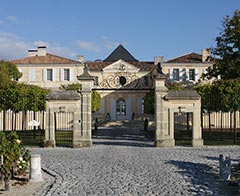
Situé sur une des plus belles et des plus hautes croupes de graves de l'appellation Margaux, le Château du Tertre possède une histoire des plus intéressantes. Ce domaine est né au XVIIIe siècle de la volonté d'un important négociant d'origine irlandaise, Pierre Mitchell, amoureux de la région et de ses vins. Fondateur de la première verrerie de Bordeaux, cet homme raffiné et novateur y réalisera son rêve, donnant aux lieux un charme et une élégance indéniables.
D'illustres familles s'y succèderont : les de Brezets, les Henri de Vallandé ou encore les Koenigswarter, riches banquiers proches de l'empereur Napoléon III… La qualité de ses vins sera unanimement reconnue lors du classement de 1855 et lui vaudra son titre de Grand Cru Classé de Margaux.
En 1997, Éric Albada Jelgersma en fait l'acquisition et s'emploie depuis, grâce à d'importants investissements et à un savant dosage de tradition et d'innovation, à redonner à Château du Tertre tout son caractère et sa noblesse.
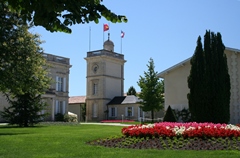
L’abbé Gruaud a dessiné l’histoire du château en 1725. Il voulait un vin à la fois élégant et puissant, ce qu’il a réussi à faire très rapidement. S’il était connu pour son obstination, il reste aussi dans les mémoires pour son humour.En 1771, grâce à la famille de Joseph-Sébastien de Larose, neveu et unique héritier de l’Abbé Gruaud, le vin a non seulement accru sa réputation mais s’est fait un nom : Gruaud Larose.Par voie d’enchères judiciaires, le domaine a changé de mains en 1812, à la mort de J-S Larose. Deux familles, les Sarget et les Balguerie, se sont alors partagé le domaine. La devise « Le roi des vins, Le vin des rois » est alors imaginée par le baron Sarget et figure désormais sur l’emblème du Château.
En 1917, la famille Cordier a investi dans le domaine. En 1947, Jean Cordier, le petit-fils, a modernisé la gestion du château, accru sa notoriété et renouvelé la plus grande partie du vignoble. On a assisté notamment à la plantation de cabernet sauvignon de manière majoritaire.La Hénin, filière de la Banque Suez, acquiert le domaine en 1983 donnant à l’entreprise familiale une envergure internationale.C’est en 1993 que le groupe Alcatel-Alsthomprend possession du domaine. Il a décidé de restaurer entièrement le château (chais agrandis, partie des cuves reconstruite en bois, dispositif technologique unique pour l’équipe technique, installation d’un laboratoire œnologique, d’une station météorologique et d’une station d’épuration).
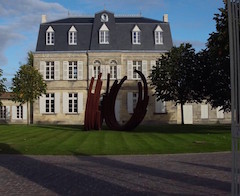
Propriété des vignobles Austruy depuis 2012, le Château Malescasse construit en 1824, illustre à merveille l’intemporel classicisme des grands vins du Haut-Médoc.
Renommé pour la qualité de ses vins et son terroir privilégié, il se situe entre Margaux et Saint-Julien, sur la commune de Lamarque. Ici, sur les plus belles croupes de graves médocaines qui font la singularité des grands vins de Bordeaux, merlots et cabernets s’expriment avec harmonie.
Le vignoble de Château Malescasse est constitué de 40 hectares d’un seul tenant. Il bénéficie donc d’une très belle homogénéité. Et les subtiles nuances d’une parcelle à l’autre contribuent à déterminer sa complexité et son équilibre.
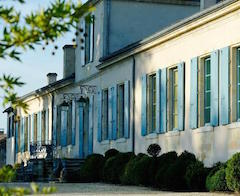
Au cœur du village de Listrac-Médoc, le Château Fourcas Hosten est une jolie chartreuse du XVIIIème siècle entourée d’un magnifique parc de 3 hectares.
En constante recherche d’excellence, le Château Fourcas Hosten met l’humain, la faune et la flore au cœur de ses préoccupations. C’est dans cet esprit que les propriétaires, Laurent et Renaud Momméja, ont fédéré leur équipe autour d’un projet d’entreprise ambitieux. Un plan de restructuration de grande ampleur participe à la montée en qualité des vins produits à la propriété. En 2016 ce sont 100% des vignes en blanc et presque 70% des vignes en rouge qui sont conduites en viticulture biologique, avec la volonté d’atteindre 100% du vignoble d’ici 2 à 3 ans.

Le Château La Tour Carnet, Grand Cru Classé en 1855, voit ses origines remonter au XIIe siècle, ce qui fait de lui le plus ancien et plus beaux Châteaux du Médoc.
Son architecture est de type médiéval avec une tour construite en 1120, ceinturée de douves. Le vignoble de 73ha du Château La Tour Carnet y a été implanté dans l'année 1407 et il a été classé 4ème cru en 1855.
Il a connu des propriétaires célèbres dont la famille de Michel de Montaigne, un des plus grands philosophes français, auteur des Essais, et qui fut deux fois Maire de Bordeaux.
En 1999, c’est Bernard Magrez, le propriétaire de Pape Clément qui en fait l’acquisition et qui réalise depuis d’importants travaux de rénovation et d’amélioration au château, à la vigne, au cuvier et au chai.
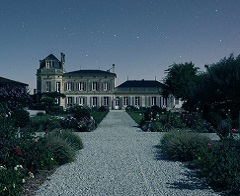
Ni cru bourgeois, ni cru classé, ce château est totalement atypique.
Cette belle demeure aux volets roses et aux œuvres contemporaines pleines d'humour dégage autant de poésie que son nom. Vous serez sous le charme !
Certains attribuent ce nom à lord Byron de passage en France, d'autres à Charles Baudelaire en visite chez un voisin du château, Odilon Redon, illustrateur de Spleen et Idéal. La direction de la propriété est depuis trente ans l'affaire de femmes. Hier, Bernadette Villars, fille de Jacques Merlaut, dès 1976, puis Claire, sa fille, à partir de 1992 et maintenant Céline, sa seconde fille.
Le vignoble se situe sur la route des châteaux du Médoc vers Pauillac, à mi-chemin entre Margaux et Saint-Julien. Son appellation, Moulis-en-Médoc, est la plus petite des appellations du Médoc. On y rencontre une diversité exceptionnelle de terroirs complémentaires, des graves garonnaises et pyrénéennes pures à l'argilo-calcaire.
Les vins de Chasse-Spleen sont un reflet de la diversité des terroirs de son appellation : la fraîcheur et la minéralité du Cabernet Sauvignon posé sur des graves épaisses, la rondeur et la suavité du Merlot planté dans de l'argile sur calcaire.
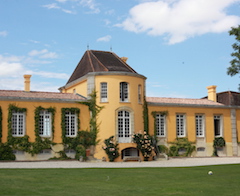
L’origine de ce très ancien domaine de 45ha d’un seul tenant, remonte à la moitié du XVIe siècle. Le château Lafon-Rochet, Grand Cru classé en 1855, appartient depuis 1960 à la famille Tesseron, producteur de Cognac. Idéalement situé, entre Cos d’Estournel et Lafite-Rothschild au sud, Lafon-Rochet peut revendiquer l’un des plus prestigieux voisinages viticoles qui soient au monde.
En 2000, cuviers et chai à barrique ont été rénovés.
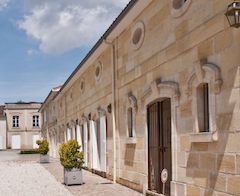
Le Château Marquis de Terme (Quatrième Grand Cru Classé de 1855) est un domaine viticole de 40 hectares situé au cœur de l'appellation Margaux (Gironde).
Depuis 1935, le domaine appartient à la famille Sénéclauze dont les générations se succèdent pour en assurer le développement.
La gestion parcellaire du vignoble respecte les équilibres écologiques et l’environnement. Les vendanges manuelles font l’objet d’un tri minutieux afin de ne porter que les plus belles grappes au cuvier. Un Grand Cru Classé à dimension humaine, qui exprime sa modernité dans le respect de la tradition.
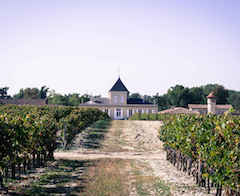
Fondée au 18ème siècle par la famille Gorce qui lui a donné son nom d’origine, cette propriété située sur la meilleure croupe de graves de Cantenac était déjà considérée avant la classification de 1855 comme l’un des meilleurs Seconds Crus du Médoc.
En 1833, elle fut rachetée par le baron de Brane, connu comme le «Napoléon des Vignes» qui la baptisa Château Brane-Cantenac.
En 1925, Léonce Récapet, propriétaire de Château Margaux, s’en porta acquéreur. Son petit-fils, Lucien, prit sa suite en 1956. En 1992, son fils Henri, œnologue et ampélographe, a repris le flambeau. Depuis son arrivée, Henri Lurton s’est attaché à donner à chaque millésime de ce grand Margaux, l’éclat et la complexité que lui confère son terroir exceptionnel, en recherchant toujours l’équilibre entre la qualité intrinsèque du millésime et l’élégance du vin. Aujourd’hui, Brane est un château à la pointe du progrès, doté d’outils de travail très performants tel son tout nouveau système de tri optique. La recherche de l’excellence est l’une des priorités de son propriétaire !
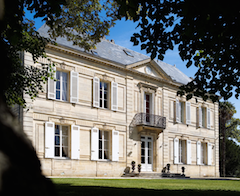
Le nom de ce domaine provient de son fondateur, Gabriel Ferrière, courtier royal à Bordeaux au XVIIIe siècle.
En 1855, Château Ferrière fut classé Troisième cru.
Avec ses 20 ha de vignes, situées majoritairement sur la commune de Margaux et son terroir composé de graves garonnaises profondes, Château Ferrière possède l’un des plus petits vignobles des Grands Crus Classés en 1855. La taille de son vignoble, alliée à la beauté de son terroir, fait du vin de Château Ferrière, un produit rare et prisé.
Claire Villars Lurton est propriétaire de ce cru qui a entrepris une rénovation complète de ses installations et se met progressivement à la biodynamie. La propriété est en certification biologique depuis 2015. Elle s’emploie avec la plus grande finesse, à révéler dans son vin, l’exceptionnel terroir de Château Ferrière.
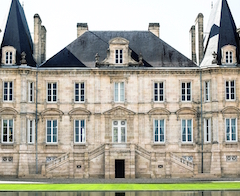
Pichon-Longueville Baron
Producteur d’un vin aujourd’hui parmi les plus réputés de Pauillac le domaine est fondé en 1694 par le Baron Jacques Pichon de Longueville.
Château Pichon Longueville Baron est situé à Pauillac. Il est classé deuxième Grand Cru dans la classification officielle des vins de Bordeaux de 1855.
Le vignoble du Château Pichon Longueville Baron s'étend sur 73 ha de belles terres de graves au sud de la commune de Pauillac. Le Terroir du Château Pichon Longueville Baron est constitué de 62% de Cabernets sauvignons, 35% de Merlots et 3% de Cabernet Franc.
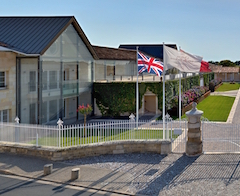
Le Château Léoville Poyferré, Second Cru de Saint-Julien classé en 1855, élabore son premier vin à partir de 80 ha de graves. Les vignes se partagent entre 4 cépages pour un assemblage final dominé par le cabernet sauvignon avec ensuite environ un quart de merlot, 5 à 10 % de petit verdot et des traces de cabernet franc.
En 1920, la famille Cuvelier achète la propriété et depuis 1979, Didier Cuvelier en assure la bonne marche.
Depuis, tous les ans, d’importants investissements, aussi bien techniques qu’humains, sont réalisés. Toujours en synergie avec le terroir exceptionnel de Léoville Poyferré, ils visent à ce que le terroir s’exprime pleinement dans le vin.
Tous ces efforts innovants et quotidiens permettent d’obtenir un très grand vin, distribué dans le monde entier.
Il se caractérise par son équilibre parfait, sa très grande finesse, son élégance et sa remarquable aptitude au vieillissement.
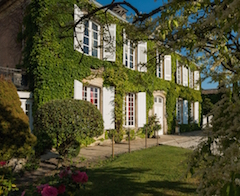
Le château a été fondé au XIIe siècle par les moines de l’abbaye de Vertheuil.
En 1951, Alexis Lichine, surnommé le pape du vin, prend possession du domaine pour lui donner son nom deux ans plus tard. Grâce à une politique faite de patience et d’obstination, il dote son cru de nouveaux terroirs, modernise les installations existantes et fait restaurer l’ancienne demeure ecclésiastique. Le château Prieuré-Lichine lie alors sa destinée à la famille Lichine pendant près d’un demi-siècle.
Aujourd’hui propriété du groupe Ballande, le domaine poursuit son histoire, avec l’acquisition de 8 hectares supplémentaires en 2012 et la construction d’un nouveau cuvier.
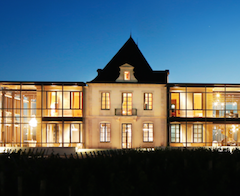
Château Pédesclaux, Grand Crus Classé en 1855, a été créé en 1810 par un célèbre courtier en vin bordelais et est situé dans l’un des plus beaux secteurs de Pauillac. Le vignoble de 42ha s’étend sur des sols de graves sur sous-sol argileux avec un encépagement constitué principalement de Cabernet-sauvignon et de Merlot.
Le château est en pleine progression depuis une restructuration en profondeur du vignoble en 2009, l’acquisition de nouvelles parcelles qualitatives et la construction d’un chai gravitaire respectant la qualité originelle du raisin.
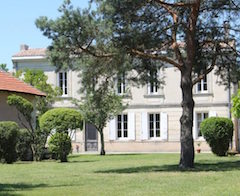
Le vignoble trouve son origine en 1850, année de création de la propriété par Pierre Sauts à Listrac, en Médoc. Son fils Claude lui succède et développe le vignoble jusqu'à son départ prématuré. La propriété reste alors en sommeil pendant une soixantaine d'années.
En 1993, Alain Blasquez, arrière-petit-fils de Pierre Sauts, prend un tournant professionnel et décide de relancer Château Baudan, un véritable défi qui a été mûrement réfléchi pendant plusieurs années.
Au fil des rachats de parcelles et des plantations, Château Baudan s'agrandit. C'est aujourd'hui un vignoble de près de 9 ha en plantation.
En juin 2003, le travail sérieux des propriétaires et de leur œnologue Marc Quertinier a été récompensé : Château Baudan est classé Cru Bourgeois.
Les vignes sont composées de 3 cépages : Cabernet Sauvignon, Merlot, Petit Verdot.
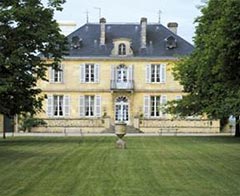
Un beau château au charme authentique et familial. Construit par Marc Kirwan, le premier propriétaire du château d'origine irlandaise.
Vous aurez envie de vous attarder dans le parc à l'image d'un tableau impressionniste.
Kirwan, une demeure au charme infini, édifiée à la fin du XVIIIe siècle dans un style classique par Mark Kirwan d'origine irlandaise. Cet illustre homme d'affaires va réunir deux petits vignobles contigus dans le village de Cantenac sous son nom, tout en tissant la réputation de son vin auquel Thomas Jefferson, lors d'un périple en 1787, rendra un vibrant hommage et qualifiera château de « Quirouen » de 2e catégorie dans son ouvrage Jefferson on wines, comme les vignobles Ségur, Lynch…
En 1855, lors de la sélection des vins du Médoc pour l'exposition universelle organisée par Napoléon III, Château Kirwan est classé premier des Troisièmes Grands Crus Classés du Médoc. C'est dans la deuxième moitié du XIXe siècle que la famille Godard acquiert, agrandit le domaine et dessine le parc actuel avec son vivier et la tonnelle de roses.
En 1926, la famille Schÿler achète la propriété. D'origine hanséate et installée à Bordeaux depuis 1739 comme négociant en vins, elle réalise d'importants investissements, après les années 1970, et contrôle la destinée de ce cru. En 2007, elle renforce les compétences de Sophie, Nathalie et Yann Schÿler en nommant directeur général, Philippe Delfaut, un oenologue expérimenté.
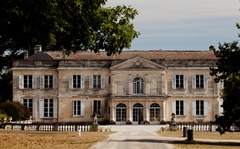
Le château du Taillan se situe aux portes de Bordeaux dans le vignoble du Médoc. Cette propriété familiale est aujourd’hui gérée exclusivement par des femmes. Depuis l’acquisition de la propriété par Henri Cruse en 1896, 4 générations se sont succéder jusqu’aux 5 sœurs actuellement à la tête du vignoble. Le Château du Taillan est l’une des plus belles propriétés de Gironde de par sa bâtisse du XVIIIème siècle à l’architecture classique mais aussi en raison de ses caves souterraines inscrites aux Monuments Historiques de France.Le parc du château est remarquable par ses arbres centenaires et ses statues incitant à la promenade. Le vignoble, quant à lui, s’étend sur 30 hectares pour produire un Cru Bourgeois de grande qualité ainsi qu’un excellent vin blanc, production rare dans les propriétés du Médoc, fait à partir du Sauvignon blanc exclusivement. Le vignoble en rouge connait un encépagement classique pour le bordelais avec une majorité de Merlot (70%) due à la récurrence des sols argileux, mais l’on y trouve aussi 20% de Cabernet Sauvignon et 10% de Cabernet Franc.
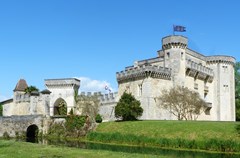
L’histoire du château remonte au 11ème s. Les fondations sont de cette époque. Le plus vieux château du Médoc.
Le donjon qu’on voit en arrivant, les chemins de ronde etc sont du 14ème s., construit en plein pendant la guerre de 100 ans. Par le suite de grands seigneurs français y résidèrent
Le château est dans la même famille depuis 7 générations. Il est entré dans la famille de M.Gromand, actuel propriétaire en 1841. Cette même famille fut par ailleurs propriétaires d’autres châteaux tels que Haut-Brion et château Margaux, tous deux 1er Grand Cru classé du Médoc.
Les dépendances où sont situés les chais ont été ajoutés au 17ème siècle.
Le Vignoble date du 15ème siècle et représente 35 ha.Il est composé des 4 cépages les plus représentatifs du Médoc : cabernet sauvignon (45%), merlot (35%), cabernet franc (15%)et petit verdot (5%).
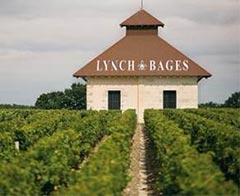
Situé aux portes de Pauillac et dominant l'estuaire de la Gironde, le vignoble de Lynch-Bages s'étend sur le plateau de Bages, l'une des plus belles croupes de graves de la commune. Autrefois propriété de l'illustre famille Lynch, d'origine irlandaise, le domaine fut racheté en 1934 par Jean-Charles Cazes. Ses descendants, André, Jean-Michel, Sylvie, et Jean-Charles Cazes oeuvrent successivement au développement et au renom de ce cru classé en 1855. Dès 1980, Jean-Michel entreprend la modernisation de Lynch-Bages tout en conservant l'ancien cuvier témoin du XIXe siècle et du prestige retrouvé de ce cru d'exception...
Persuadé que le vin appartient à un vaste univers culturel, un art de vivre, une manière d'être et de partager, il crée le Château Cordeillan Bages, un Relais & Châteaux qui accueille aujourd'hui les visiteurs du monde entier et propose une table illustre sous la baguette de Jean-Luc Rocha. À partir de 2001, il fait revivre le village de Bages directement adossé à la propriété et pas à pas, confie les rênes du domaine à son fils Jean-Charles. Les vins de Lynch Bages sont les témoins de cette générosité et de cette excellence. Aujourd'hui, le désir de toute la famille Cazes est de vous accueillir à Lynch Bages pour partager sa passion.


